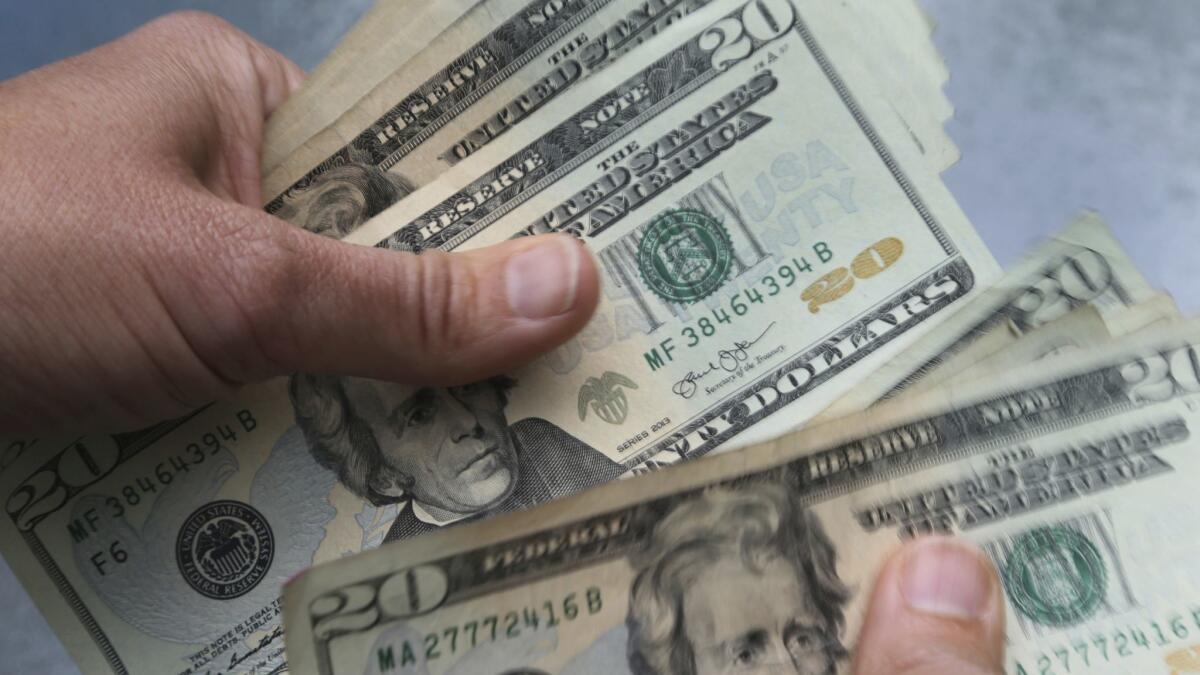U.S. workers get fastest wage increase in a decade — if you ignore inflation

U.S. workers are seeing the largest nominal wage increase in a decade, the Labor Department reported Wednesday, as companies compete harder for employees than they have had to in recent years.
Wages rose 2.9% in September 2018 compared with September 2017, according to the Labor Department’s Employment Cost Index, a widely watched measure of pay that does not take inflation into account.
That is the biggest increase — not adjusted for inflation — since the year that ended in September 2008, when wages rose 3.1%.
When adjusted for inflation, wage increases were higher in 2015 and 2016 than they are now, according to the Employment Cost Index. In those years wages were growing in a range of only 2% to 2.5% a year, but inflation remained low.
Prices have also been rising in the last year, especially for gas and rent, but wages are outpacing inflation by a significant margin. Annual inflation was 2.3% in September, according to the Labor Department.
Sluggish pay growth has been one of the biggest problems in this recovery, but employers are finally having to raise wages at a pace more typically seen during good economic times. Unemployment is at a 49-year low and there are more job openings than unemployed Americans, which forces companies to fight for available workers.
“Wages are grinding higher as the labor market continues to tighten,” said Justin Weidner, an economist at Deutsche Bank. “Wage growth is likely to be over 3% again soon.”
On Friday, the Labor Department will release the other most-watched wage metric: average hourly earnings. Many economists expect an increase above 3% for the first time since April 2009.
“How hot is the labor market? Hot enough for employers to pony up some more cash to get workers to come work for them,” Chris Rupkey, chief financial economist at MUFG Union Bank, said in a note to clients.
As Americans head to the polls for the midterm elections next week, consumer confidence is at the highest level since 2000, largely because people feel that job opportunities are plentiful, the Conference Board’s Consumer Confidence Survey showed Tuesday.
In a sign companies are struggling to find enough workers, just 23% of companies said their firms are not having any trouble hiring, down from 42% a year ago, according to a survey by the National Assn. for Business Economics released this week.
More than half of small businesses say they can find few, if any, qualified candidates for their open positions, according to the latest National Federation of Independent Business survey. Small-business owners say they plan to increase employee compensation in the coming months at the fastest rate since the NFIB survey began in the 1980s.
Wage growth has been rising steadily in the past year, according to the Employment Cost Index. From September 2016 to September 2017, wages and salaries rose 2.5%, the Labor Department said.
Some have reasoned that companies were holding off on increasing wages because they had to put more money toward benefits, but the Employment Cost Index also tracks benefits costs, and those have not risen as much as wages. Benefits grew 2.6% in the year that ended with September 2018, versus 2.4% in the prior year.
President Trump has taken credit for the strong economy and frequently touts low unemployment and solid job growth. Economists say his policies deserve some credit for triggering faster growth, but unemployment has been falling steadily for eight years and wages have been inching up.
“It’s not about the tax cuts. This is about the gradual tightening in the labor market finally forcing employers to pay more,” said Ian Shepherdson, chief economist at Pantheon Marcoeconomics. “There’s no question the trend is rising, but we are not exploding. We are still in a phase of gradual, incremental creep.”
Trump campaigned heavily on bringing back blue-collar jobs. Manufacturing and other blue-collar professions are seeing some of the fastest job growth since the mid-1980s, but their pay is not rising. Most of the wage growth in the Employment Cost Index is coming from service sector jobs. Pay in the goods-producing sector has actually slowed in the last year, notes Michael Pence, senior U.S. economist at Capital Economics.
For Azoria Morales, a single mother of two young boys who earns $8.50 an hour as a housekeeper in St. Louis, wage increases can’t come soon enough. She recently had to replace the alternator on her car, an unexpected expense that meant she had to tell her boys she couldn’t afford for them to play in the youth football league this season.
“Putting food on the table is a constant struggle. I was going to school to be a dental assistant, but I was in a car crash, resulting in nerve damage to my hand,” said Morales, who is 28. “I do the best I can with what I have. Costs keep going up, but my wages haven’t kept pace.”
Long writes for the Washington Post.






